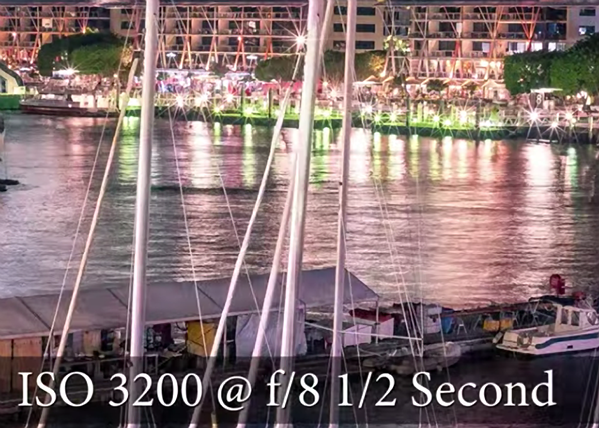High ISO vs. Slow Shutter Speed: What Works Best for Low-Light Photography Without Flash? (VIDEO)

Low-light photography is all about compromises, especially when shooting with natural light. You can use high ISO settings to arrive at a proper exposure, but image quality tends to suffer and noise rears its ugly head. The other option is to select slow shutter speeds, but that approach has pitfalls of its own.

This tutorial from photographer Mark Wallace, explores whether high ISO settings or slow shutter speeds deliver the best results. As you might expect, the answer may be one, the other, or both—depending upon the situation. Take a look at the six-minute video below, and see how to make the most of all three options.

Most photographers would agree that a sharp image with noise is preferable to a clean image with motion blur, but let’s see what Wallace has to say while shooting nighttime cityscapes at Darling Harbor in Sydney, Australia. Because there’s no movement in the distant skyline, he begins with a 16-second exposure at f/8 and ISO 100, with his camera mounted on a tripod. The result is the nice image at the top of this page.

For his next shot, Wallace takes the same photograph with a shutter speed of ½-second at f/8, and ISO 3200. As you’ll see, the exposure remains correct, but the noise in the shot renders it inferior. Thus, for this particular scene, a low ISO and a fast shutter speed wins.

But what about photographing subjects with movement, when you want to avoid motion blur? Here, Wallace shoots on the wharf without a tripod or flash, to capture a scene with rocking boats and a moving Ferris wheel in the background. In this situation, fast shutter speeds at high ISOs work best, and prevent images that Wallace calls a “blurry mess.” Hence, what Wallace refers to as “the glory of hand-held photography at high ISO.
So what’s the answer to the question we posed in the headline? “It depends.”
Check out the AdoramaTV YouTube channel for more shooting advice, and be sure to watch an earlier tutorial in which Wallace explains how to balance window light and flash when shooting indoor portraits.








































